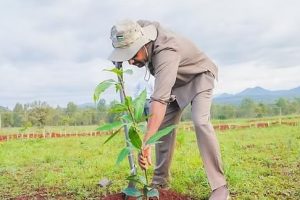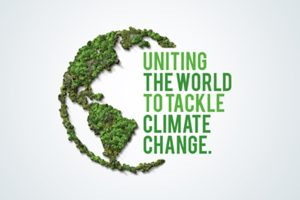The issue of the environment has developed through time and become an international concern. Especially, at the Stockholm Conference in 1972, the concerns about the environment were catapulted into the spotlight. This confirmed that global cooperation to save our planet would need to harmonize economic, social, and environmental development.
To guide countries in this process, the UN Environmental Program was founded at the Conference as the international authority and advocate for environmental concerns. Today, UNEP leads programs around the world focused on climate, nature, pollution, and sustainable development.
Moreover, to mark the 20th anniversary of Stockholm, the UN convened the 1992 Earth Summit and brought together an unparalleled number of policymakers, scientists, and non-governmental organizations in Rio de Janeiro. There, they adopted the three Rio Conventions on biodiversity, climate change, and desertification, which are the focal points for international environmental rule-making and action to this day.
This year also environmental summit is held in Sweden. Stockholm+50 will be convened by the UN General Assembly and the Governments of Sweden and Kenya in early June. It takes place during the same week as World Environment Day.
Ethiopian Prime Minister Abiy Ahmed expressed his appreciation to the Government of Sweden, and Kenya, for Co-hosting Stockholm plus 50 conference. The conference is the first and most important conference to link development and the environment.
Indeed, this time around, the world is not only celebrating the birth of environmental multilateralism but will also be presented with a moment to take the lessons learned since 1972 and help build a climate action road map for the next 50 years. The conference is key to solidifying the environmental agenda, achieving a healthy planet, living up to the promise, and turning climate and environmental commitments into action.
It is well acknowledged that the link between development and the environment is the best way to mitigate climate change. Even we can gather a response when we ask how does Ethiopia discharge its responsibilities in combating climate change through its developmental endeavor?
According to Prime Minister Abiy, Ethiopia has been doing its fair share of ensuring a healthy planet on all fronts. For instance, the Green Legacy initiative is an exemplary ambitious national flagship initiative launched in 2019 aiming to plant more than 20 billion tree seedlings by 2022.
Ethiopia proudly managed and already planted some 18 billion seedlings from 2019 to 2021. This year the nation will exceed the fourth year the Green Legacy initiative. Hence, the summit is important to place the issue of poverty at the front and represents an open discussion about maintaining a positive relationship with nature, he added.
In fact, the challenge of climate change has been affecting the development of African countries by rising unemployment rates, inflation, trade imbalance, and falling real wages playing a role and so on. Each of these factors can negatively affect the Gross Domestic Production (GDP) of a nation, leading to a loss of revenue for businesses, enterprises, and so on.
A senior environmental expert from the Economic Commission for Africa (ECA), Linus Mofor, explained that African economies are losing on average 5 percent of GDP because of climate change. This increased up to 15 percent even in some countries. Hence, mitigating climate change helps the nation to increase GDP which brings social and economic development.
So, Ethiopia’s effort to mitigate climate change via planting tree seedlings is crucial to ensuring development since planting tree seedlings has the power to avert flooding, food insecurity, and environment-related conflicts. It also restores the country’s green coverage, eliminating erosion and pollution, reducing conflicts arising due to environmental degradation and reduction of natural resources, and measures to support the agricultural sector.
Ethiopia indeed planned to plant 20 billion trees across the nation by 2022. Accordingly, during the 2019 plantation campaign over 23 million people, and in the 2020 plantation period over 27 million Ethiopians participated in the plantation. Even in 2021, Ethiopia has planted about 6 billion tree seedlings. Although the initiative set 20 billion targets in four years, in 3 years, more than 18 billion seedlings have been planted across the country. This shows the commitment of the people and the government of Ethiopia to mitigate climate change.
Taking the significance of green legacy initiatives and related activities into account, Prime Minister Abiy urges the international community to foster trustworthy ties between state and non-state actors to increase collaboration and solidarity in combating climate change.
“This can be done by rethinking the future together through inclusivity, knowledge, and learning. This is critical if we want a healthy planet for everyone’s sake. As we mark the 50th anniversary of the Stockholm Conference, we must consider what we have done to implement the principles of the Stockholm Declaration both individually and collectively.”
“Also, the global community must prepare itself for the rising environmental challenges recurrently encountering the planet. To that end, it is vital to put national and institutional capacities in place to strengthen the national effort. The PM further emphasized the importance of complying with international environmental agreements.
More importantly, the initiative has paved the way for collaboration and solidarity in the sub-region since Ethiopia has been sharing its green legacy initiative with neighboring countries in the spirit of unity. The nation lays the foundation for generational well-being. Hence, “we invite all willing partners to join us in sustaining the legacy journey for generations to come.” Because sustaining green legacy initiatives can be a model to link
BY EPHREM ANDARAGCHEW
The Ethiopian Herald 5 June 2022





